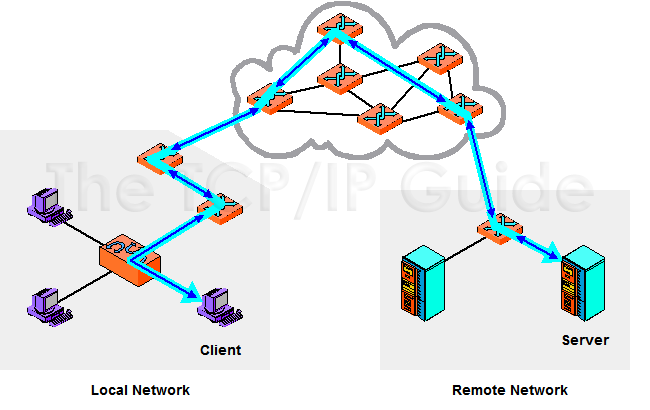 |
|
Please Whitelist This Site?
I know everyone hates ads. But please understand that I am providing premium content for free that takes hundreds of hours of time to research and write. I don't want to go to a pay-only model like some sites, but when more and more people block ads, I end up working for free. And I have a family to support, just like you. :)
If you like The TCP/IP Guide, please consider the download version. It's priced very economically and you can read all of it in a convenient format without ads.
If you want to use this site for free, I'd be grateful if you could add the site to the whitelist for Adblock. To do so, just open the Adblock menu and select "Disable on tcpipguide.com". Or go to the Tools menu and select "Adblock Plus Preferences...". Then click "Add Filter..." at the bottom, and add this string: "@@||tcpipguide.com^$document". Then just click OK.
Thanks for your understanding!
Sincerely, Charles Kozierok
Author and Publisher, The TCP/IP Guide
|
|
|

Custom Search
|
|
IP Overview and Key Operational Characteristics
(Page 1 of 2)
The Internet Protocol (IP) is the core of the TCP/IP protocol suite and its main protocol at the network layer. The network layer is primarily concerned with the delivery of data, not between devices on the same physical network, but between devices that may be on different networks that are interconnected in an arbitrary manner: an internetwork. IP is the mechanism by which this data is sent on TCP/IP networks. (It does have help from other protocols at the network layer too, of course!)
Let's look at the TCP/IP layer model and consider what IP does from an architectural standpoint. As the layer three protocol, it provides a service to layer four in the TCP/IP stack, represented mainly by the TCP and UDP protocols. This service is to take data that has been packaged by either TCP or UDP, manipulate it as necessary, and send it out. This service is sometimes called internetwork datagram delivery, as shown in Figure 54. As we will see, there are many details to how exactly this service is accomplished, but in a nutshell, that's what IP does: sends data from point A to point B over an internetwork of connected networks.
|
|
Of course there are a myriad of ways in which IP could have been implemented in order to accomplish this task. To understand how the designers of TCP/IP made IP work, let's take a look at the key characteristics used to describe IP and the general manner in which it operates. The Internet Protocol is said to be:
- Universally-Addressed: In order to send
data from point A to point B, it is necessary to ensure that devices
know how to identify which device is “point B”. IP defines
the addressing mechanism for the network and uses these addresses for
delivery purposes.
- Underlying-Protocol Independent: IP is
designed to allow the transmission of data across any type of underlying
network that is designed to work with a TCP/IP stack. It includes provisions
to allow it to adapt to the requirements of various lower-level protocols
such as Ethernet
or IEEE
802.11. IP can also run on the special
data link protocols SLIP and PPP that
were created for it. An important example is IP's ability to fragment
large blocks of data into smaller ones to match the size limits of physical
networks, and then have the recipient reassemble the pieces again as
needed.
- Delivered Connectionlessly: IP is a connectionless
protocol. This means that when A wants to send data to B, it doesn't
first set up a connection to B and then send the data—it just makes
the datagram and sends it. See
the topic in the networking fundamentals section on connection-oriented
and connectionless protocols for more
information on this.
- Delivered Unreliably: IP is said to be
an “unreliable protocol”. That doesn't mean that one day your
IP software will decide to go fishing rather than run your network.
J It does mean
that when datagrams are sent from device A to device B,
device A just sends each one and then moves on to the next. IP
doesn't keep track of the ones it sent. It does not provide reliability
or service quality capabilities such as error protection for the data
it sends (though it does on the IP header), flow control or retransmission
of lost datagrams.
For this reason, IP is sometimes called a best-effort protocol. It does what it can to get data to where it needs to go, but “makes no guarantees” that the data will actually get there. - Delivered Without Acknowledgments: In a similar manner to its unreliable nature, IP doesn't use acknowledgements. When device B gets a datagram from device A, it doesn't send back a “thank you note” to tell A that the datagram was received. It leaves device A “in the dark” so to speak.
|
| |||||||||||||||||||
Home - Table Of Contents - Contact Us
The TCP/IP Guide (http://www.TCPIPGuide.com)
Version 3.0 - Version Date: September 20, 2005
© Copyright 2001-2005 Charles M. Kozierok. All Rights Reserved.
Not responsible for any loss resulting from the use of this site.








 Key Concept: While the Internet Protocol has many functions and characteristics, it can be boiled down to one primary purpose: the delivery of datagrams across an internetwork of connected networks.
Key Concept: While the Internet Protocol has many functions and characteristics, it can be boiled down to one primary purpose: the delivery of datagrams across an internetwork of connected networks.